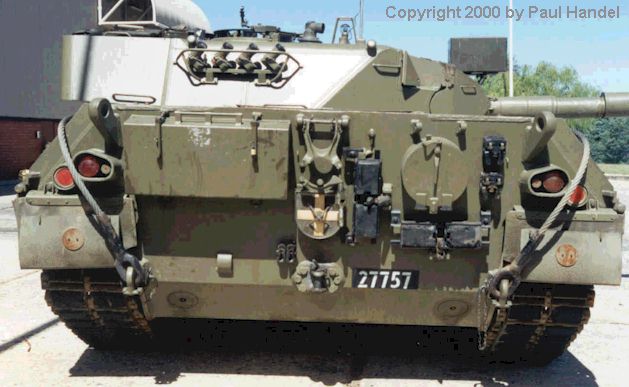What you mean Late?.. You guys didn’t snuff him out did you!..You said he was merely banned.
Snuffing someone out goes beyond what punishment someone should get:(
“Late” in a virtual way. Just like that temporary virtual coma you’ve been in, remember?
why would tanks have field phones fitted to them
Why not? maybe so the tanks can talk to other tanks?
Herman you are quite an amusing fellow aren’t you…
So that infantry outside could talk to the tank crew
The M-60 sries was equipped with external commo, it was located above the right rear fender, just aft of the small sponson box. these were needed if anyone wanted to talk to the crew, as the engine noise prohibits talking from the ground even if the hatches are open. The primary purpose was to allow the infantry to communicate their fire support needs, and to alert the crew to whatever types of hazards may be present. (Trading food, booze, cigarettes etc. was also a common use.) the external phone was integral to the vehicle commo system,even through the radio. External phones have been pretty much standard equipment on tanks since WW2 although I havnt seen one myself, there should be one on the Abrams. Very handy things they are.
I have heard that on a contract of tanks sold to Scotland, the external phone has a coin slot, 20p per call. 
It is only in the last 5 years that infantry soldier have had radio below the section commander. And before that the frequencies range of infantry sets was not compatible with tanks sets. So a good means of communicating was needed.
The tank phone was so that the infantry man could direct tank fire onto a target. This could be used by any infantry man not just commanders. It was also very advisable to make sure that the tank commander knew you were running around behind the tank. :oops: By using the phone you also knew which tank you were talking to.
Do not confuse tank phones with field phone attachments on the side of turrets they are not the same.

This shows a field phone attachment (the cable drum) on the side of the turret. The tank phone is the square box on the back.

A better view.

The round box on the back of a leo
And one from a cent.
The cable drum on the rear of the turret of the cheify was just a cable drum (D10 cable) this was used when tanks were harboured up for communication between vehicles/sentry posts either through field phones (run separately) or connected to the tanks intercom system via a remote handset.
The remote handset was also used when in defensive positions so that the local infantry in a trench/spotters/etc can give orders/information to the crew without being stood next to a great big bullet attractor (dug in, hull down type defense in depth)
In certain circumstances it was used to allow external access to the radios on the vehicle or for placing some types of radio outside the vehicle and allowing them to be operated from inside the vehicle
Last year I was reading a description of using tanks in Iraqi cities, written by a USMC Captain. He wrote that when the tanks lacked the phone it made it a lot tougher to control the tanks. For that and other reasons he & the other company commanders learned that givng the tank commander a ‘Nine Line Brief’ was the best way to communicate the attack order to the tank. The Nine Line Brief is the standard format used to inform a pilot of the crtical information when setting up a Close Air Support strike. The format is usefull for getting the info across quickly and through all the usual problems of radio messages.
The Captain decribed how with only two tanks available to support the infantry battalion both were kept on “stanby” near the bn. CP. When needed they bn. HQ would dispatch them to the company. Using the Nine Line Brief proved just as effective for orienting a tank commander via radio as a aircraft pilot as he approached the companys battle area.
